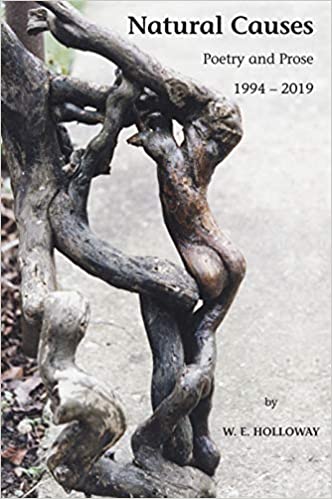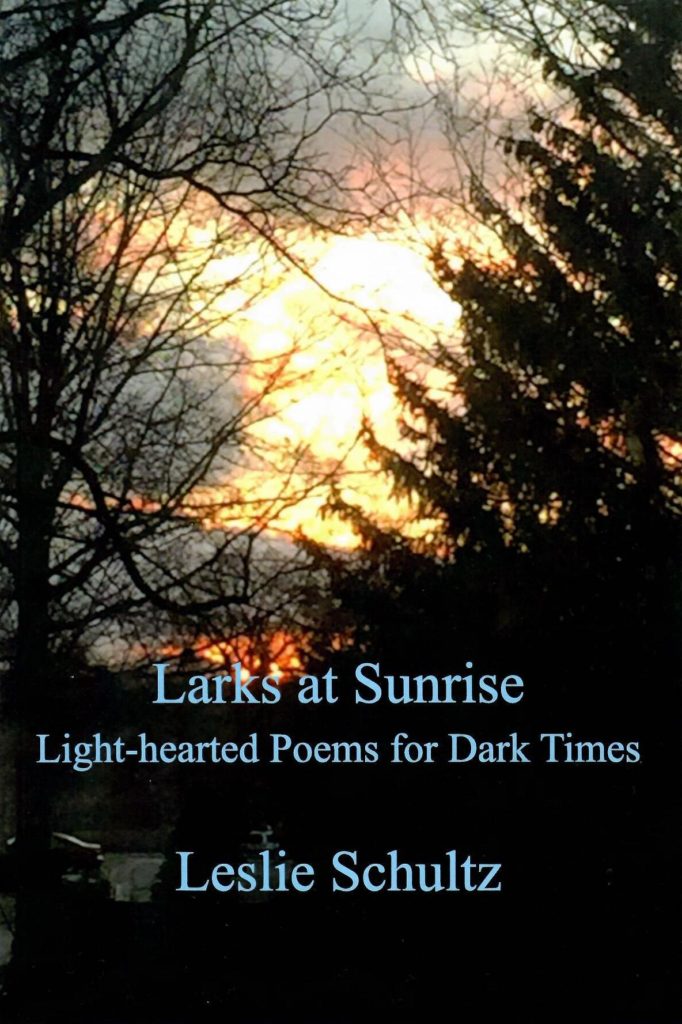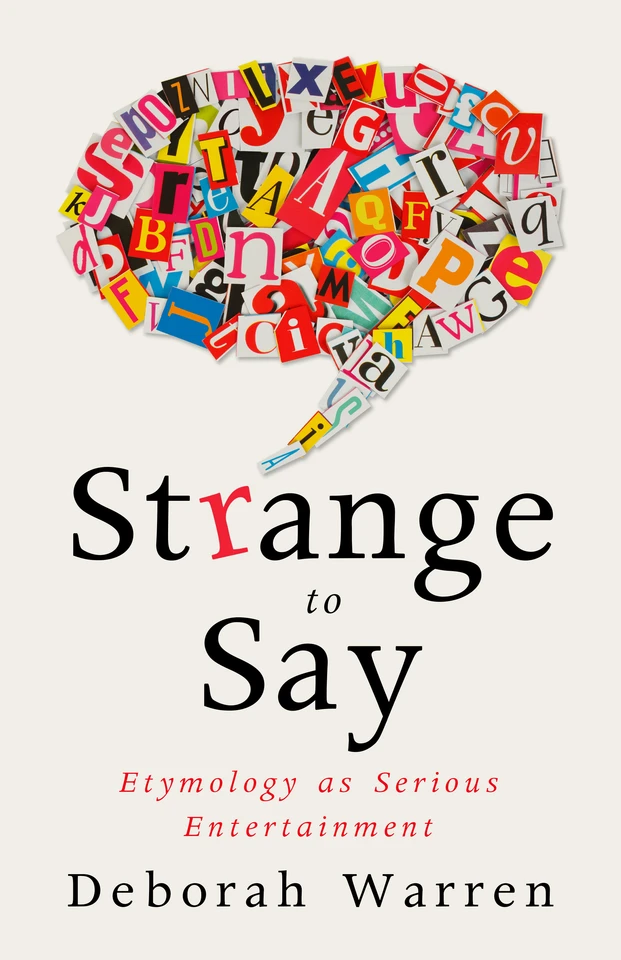If you have a book you’d like considered for a review in Light—one that includes a large helping of light verse and was published within the previous 12 months, or will be published in the next eight—please send a copy to:
Barbara Egel
PO Box 408250
Chicago, IL 60640-0005
(Pre-print-run electronic copies may be sent to lightpoetryreviews@gmail.com)
Light on Their Feet
by Barbara Egel
(Reviews of books by W. E. Holloway, Barbara Loots, Leslie Monsour, Leslie Schultz, and Deborah Warren)
The Colosseum Critical Introduction to Rhina P. Espaillat, by Leslie Monsour. Franciscan University Press, 2021.
The challenge, to call it that, of reading Rhina P. Espaillat’s poetry is its abundance. Read a whole collection at once, and the joy in what you’ve encountered is colored by your certainty that there are elements you have missed. Subsequent readings confirm this impression: that Espaillat has somehow in her clear lines put down more than you can take in, and on top of that, each prismatic poem will look different as the light changes. Poet and critic Leslie Monsour has taken this same experience and written a monograph on Espaillat that will help readers grasp more of the poems at once, text and context.
For an academic reference, Monsour’s is assured, straightforward, and engaging, all the better to showcase her subject’s poems and her own formidable insight. I couldn’t help but think that as Espaillat’s poetry is increasingly subjected to academic examination, it will be fun to see whether the usual obscurantism can be maintained while explicating the work of a poet so insistent on clarity. Monsour has that clarity.
Monsour herself speaks English and Spanish, and her experience of navigating the world in two languages reveals itself to be necessary in understanding Espaillat both as a poet and a person. The “Biography” chapter is alert to the effects of the oppositions in Espaillat’s life before and after her emigration from the Dominican Republic: the safe, happy, culture-saturated home in the increasingly politically dangerous country; the parents who adapted to their move to New York, one by embracing her new home and the other by clinging fiercely to the old one; Espaillat the seasoned New Yorker who retires to tiny Newburyport, MA and builds meaningful personal and poetic lives in both places. The thread Monsour finds throughout is that even for a poet, Espaillat is helplessly, overwhelmingly in love with both languages and wants her readers to feel that love as well.
In her analysis of the poet’s work, Monsour is affectionate and incisive. Any aspiring translator should read both Espaillat’s own thoughts on translation (liberally quoted here) and Monsour’s observations about how Espaillat applies them. The combination of “humility and fidelity” Espaillat embodies as a translator is the antidote to po-biz showmanship: “When I finish a poem that is by somebody else, I say, ‘Now is there any of me that has sneaked into this?’ and you have to watch for that” (p. 18). Monsour’s decision to spend significant time with Espaillat the translator is wise, since Espaillat’s original poems are not far from her translator’s code of conduct: straightforward, representative of emotional truth, and exacting in their form.
Monsour begins the main chapter on Espaillat’s work via an analysis of the poem “Being the Ant,” which, as Monsour notes, introduces “Espaillat’s many themes of dichotomy”—the tension between practicality and creativity, between community and the self, and between intellect and emotion. This poem is a smart choice to lead with because it introduces so many of Espaillat’s themes—including her unique use of irony—and because it shows the poet’s precision with form. Many readers think of Espaillat as a master of received forms, but while this is a metrically flawless poem, its rhyme scheme is irregular and meaningful, like the ant’s wandering thoughts. Fidelity for this poet includes form.
Monsour’s observations on Espaillat’s use of form bring forth some of her own best prose. As part of her discussion of the sonnet “Here,” Monsour says the sonnet is a form Espaillat “has learned to slip her hand into as naturally and easily as a custom-fit glove, fashioned from a silk so fine, it can’t conceal her fingerprints.” There is a lot of gorgeous writing here from Monsour, but it never lapses into the overblown. She has too much respect for her subject to let that happen.
Similarly, this is not a hagiography. Espaillat has such fun exploring her own flaws that that would never work. Moreover, Espaillat is funny. There is room for humor both in the poems and the prose about them, but the interview at the end of the book holds particular delights. For example, Espaillat gets a laugh at her own expense when discussing a steamy (for Ladies’ Home Journal in the 1940s) poem she published while still a teenager. “I had no idea which end of a guy was up, but I wanted in the worst way to be Edna St. Vincent Millay, so of course there had to be passion. I keep this old stuff only to mortify my soul.”
If you are a devotee of Rhina P. Espaillat’s poetry, this book is essential. It will enrich your rereadings of this important and complex poet, allowing you to see more at once in each poem.
Natural Causes: Poetry and Prose 1994-2019, by W. E. Holloway. Guy de Chemincreux, 2020.
W. E. Holloway is an English poet, an Oldie winner, a Lighten Up Online publishee, and someone whose work should have been appearing in Light all along. This is Holloway’s first collection, and at 83 he may be second only to Edmund Conti in the longest-wait-for-a-first-book stakes. In his non-writing life, Holloway has been, among other things, a professional gardener, and this book represents the same mix of art, science, and experimentation needed to keep a garden blooming and productive.
Holloway himself calls this a “gallimawfry” (a.k.a. gallimaufry) rather than a collection, which, I think, allows him to be looser with the content and organization than he might be in a regular collection; essentially, he’s offering us what he’s interested in on his terms, and the result is rich and varied. The poems range from tight received forms to accomplished free verse and notes in prose, and thematically, we move from the natural world to art to religion with a lot of additional surprises.
What Holloway does especially well is mix the light with the very serious in a way that doesn’t bring the reader down or derail the tone of the poem. One of the best examples of this is “Wish,” a long free-verse poem with the speaker spending the “Twenty-fifth Sunday after Trinity” in the kitchen. It is a stream-of-consciousness monologue in which “twice through the Brandenburgs” is used to mark how long the marmalade should boil down. This all might seem cozy, but amid the wandering thoughts, we get:
Lots of people to see — dear Fred, Aunt Dorothy,
the twins, the vicar (just in case!), the bank,
the bloody oncologist again.
This frightening detail in the middle of the poem completely recontextualizes the scene, and the stanza that follows is a lovely balance of light and shadow without a trace of morbidity. Similarly, “Raising the Spirits” has a good time with the balance of gin, tonic, and ciprofloxacin, the last prescribed by the doctor, the first two an exercise in the hopeful mathematics of self-medication. Somehow, Holloway gets us laughing where other poets would default to tragedy.
There are lots of fully light poems, such as “Ophrys apifera” about a surprisingly R-rated relationship between an orchid and a bee. “A CRISPR (Sic) Sort of Sonnet” panics amusingly about whether ethics have caught up with technology. A Light-ready poem about the Bolas spider is jammed full of tongue-twistery sounds and images, ending with a rhyme of “pheromoney” and “phony.” Even some religious poems tread lightly, as in “Vale Maria!” when the speaker recalls his breakup with the church, or “Cana,” which asks a very good question in an emperor’s-new-clothes kind of way.
Holloway’s nature poems—some light, some not—are a marvel of description as they examine humanity’s effects on the natural world. “Clearaway” reads like an urban-sprawl response to Stafford’s “Traveling Through the Dark,” and “Shells” is a wry look at humans’ tendency to apply motivation and emotion to nature’s processes.
Please introduce yourself to W. E. Holloway via his debut volume, and let’s hope for more to come.
The Beekeeper and Other Love Poems, by Barbara Loots. Kelsay Books, 2020.
In her most recent collection, Light contributor Loots is in even stronger form than in her previous volume, Windshift. The voice here is relaxed and confident, and when a poem occasionally feels effortful, it’s the thought process, not the composition, that strains, which is appropriate given the subjects Loots tackles. These seem to be largely new poems, focused on aging, late love, and our current political and pandemical circumstances, and her skill with tone and emotional precision is impressive.
Formally, this book includes villanelles, an eleven-line poem in hendecasyllabics, a rondeau, a ballade, Shakespearian sonnets, and two tightly woven diaspora (terza rima) sonnets along with metered nonce forms and lots of clever rhyme. What stands out about form here is that Loots uses only what’s needed. Some of these poems are short indeed, and where a less seasoned poet might have pushed them into sonnets or something longer, Loots has the maturity and control to know when she’s done. “The End” has this kind of concentration. Here it is in its entirety:
When loving could no longer make you stay,
it did the next best thing and said, Let go.
And so we both did. When you went away,
illusion snapped. I was the last to know.
The third section of the book is entirely light, and some of the poems have appeared in these virtual pages. “The Roomba” is a standout that shows sympathetic contempt for the hapless appliance until the last stanza elevates it to a metaphor for contemporary politics. “Beep” is obsessively hilarious and may ping in your brainpan next time you use your microwave. “Stay-At-Home Improvement” chronicles the dangers involved when lockdown leads to DIY-mania, for which there is no vaccine but lots of clever rhymes.
The weeds in the grass
have gone down to defeat.
The porch swing is painted.
The sidewalk cemented.
The frenzied refurbishing?
Almost demented.
The final section of the book, “Closing Remarks,” is about endings, and here Loots looks at familiar experiences from her own slant. “Three Rooms, Two Cats” is a heartbreaker of a sonnet in which a widow’s fading shows that an ordinary death, with no drama, no emergency, can be more harrowing than one that makes headlines. “Thank You For Your Service” tells the story of the modern military: working-class boys who can’t think of other options enlist to “serve your country—or at any rate, / some country you can’t spell—to make ours great.” The poem is “after Siegfried Sassoon,” and his mordant irony is captured here. Similarly ironic, “Virus Time” considers how the world is at present undone by something miniscule “when we were promised meteoric fire.”
The poems in The Beekeeper show Barbara Loots in peak form: at ease, specific, and fearless.
Larks at Sunrise: Light-hearted Poems for Dark Times, by Leslie Schultz. Green Ginkgo Press, 2021.
In this timely chapbook, Light contributor Leslie Schultz proves that there’s not much she won’t wade into once she’s found the right rhyme to buoy her up. This is a cozy volume of poems with lots of clever surprises.
Her pandemic poems focus on the small comforts, as in “A Holey Prayer Rug,” a tribute to a yoga mat, which shows her skill with a light-verse rhyme:
Although it’s tattered like a tarp, it
Has become my magic carpet.
“Consolation,” which appeared in Light, contemplates the New England college visits preempted by COVID and catalogs the not-quite-equivalent pleasures of the Minnesota town the speaker lives in.
Schultz also offers virus-free verse (as an antidote, perhaps, to the virus free-verse that’s been everywhere lately) including a limerick about Herodotus that uses quite likely all the rhymes there are for that venerable historian. “Trudy at the Helm” is about a cat who is surely the ex-girlfriend of Eliot’s Growltiger, and “Crow Cries in April” considers that certain Romantic poets would have written quite differently if they’d been cursed with seasonal allergies. The book ends happily with “Happy Hour,” a rhyme-infused sestain about winding down the day in contentment and companionship. Larks at Sunrise is exactly the book you want to end your own day with when months of pandemics and politics and pettiness have gotten to you. I promise you’ll have nice dreams.
Strange to Say: Etymology as Serious Entertainment, by Deborah Warren. Paul Dry Books, 2021.
Let’s bookend this set of reviews with prose (and Rhina P. Espaillat, to whom Deborah Warren’s book is dedicated). An award-winning poet and former Latin teacher, Warren has written a volume that—while not poetry itself—just might be essential to poets. Strange to Say is much like Mary Poppins’s carpet bag. You can reach into this smallish book and pull out ideas that are surprisingly enormous (a word that, as Warren notes on page 81, originally meant “outside ethical norms”). Each idea in the book is almost always laced to other ideas that come out in a delightful and expectation-defying string. Each essay has a theme—animals, food, names of places and people—but the connections Warren makes send you swinging far from where you started, as in a paragraph that begins with the formation of the Pillars of Hercules and winds up perfectly logically with the symbol for the Mexican peso. It’s as close as you can get to the breathless thrill of a carnival ride (“carne + vale: ‘farewell to meat,’” p. 179) without leaving your reading chair.
While hardcore word nerds will be instantly absorbed in Warren’s etymological erudition, that may not even be the best thing about this book. The voice in this volume is that of exactly the Latin or English teacher you wish you’d had. (Requiescat in pace to my own Miss Croissant (from “crescent,” Latin for increasing, p. 18) who would have loved this book.) There is a little Stephen Fry in Warren’s enormous store of knowledge that embraces contemporary pop culture as well as academia. She wants us in on the fun regardless of our level of knowledge. If you don’t know what “hustings” means, Warren explains it without judgment. If you do know “hustings” but don’t know “Humvee,” you’re no better or worse off. And Deborah Warren is funny. Little jabs and judgments, not of her readers but of the world at large, are generously salted throughout the book (salt gets its own section, pp. 175-6), as when she tells us “signage” is a word “not used by the best people.”
For fans of Light, Strange to Say should be required reading. In fact, I imagine a flood of new poem submissions based on the bizarre connections among words catalogued here. An especially rich vein should be the flood of mistranslations she identifies. Cinderella’s slippers were made of “vair” (fur) and not glass (“verre”), which I imagine was traumatizing for her woodland pals. And RuPaul’s Drag Race contestant Pandora Boxx will be shocked to learn she should be Pandora Jarr. The essay on Mondegreens and Malaprops all by itself is something to be savored sans food or drink, or it might end in that famous Dickensian spit-take, Great Expectorations. Here’s a taste: “Police are searching for the crime’s perpetuator. (A serial killer, apparently.)”
This little book, which goes from Walter Raleigh to Dan Quayle in a single paragraph via “potato,” will, I imagine, lead to parlor games (from the Middle English gamon) and all sorts of other delicious linguistic fun. Put it on your list for Christmas (which, on page 24, leads to fruitcake, then ipecac, then cashew).





